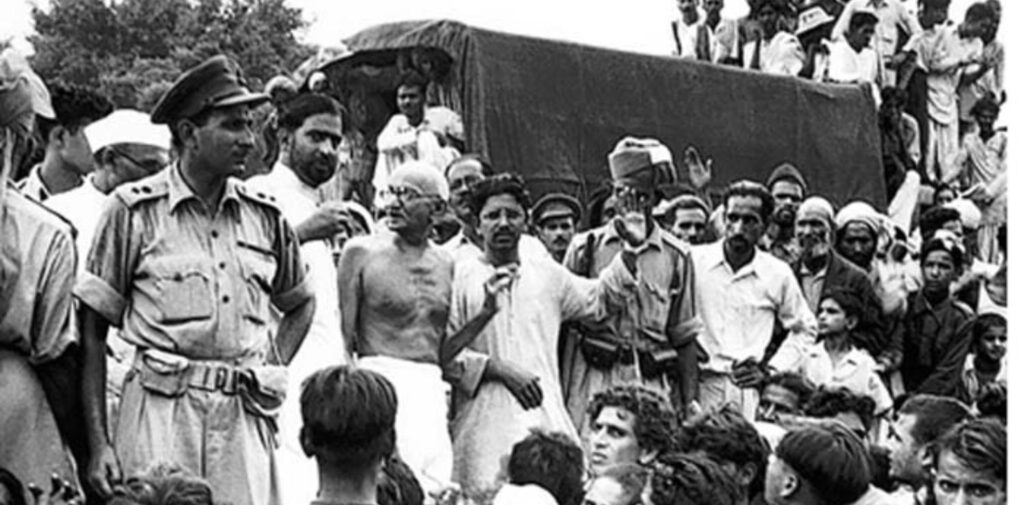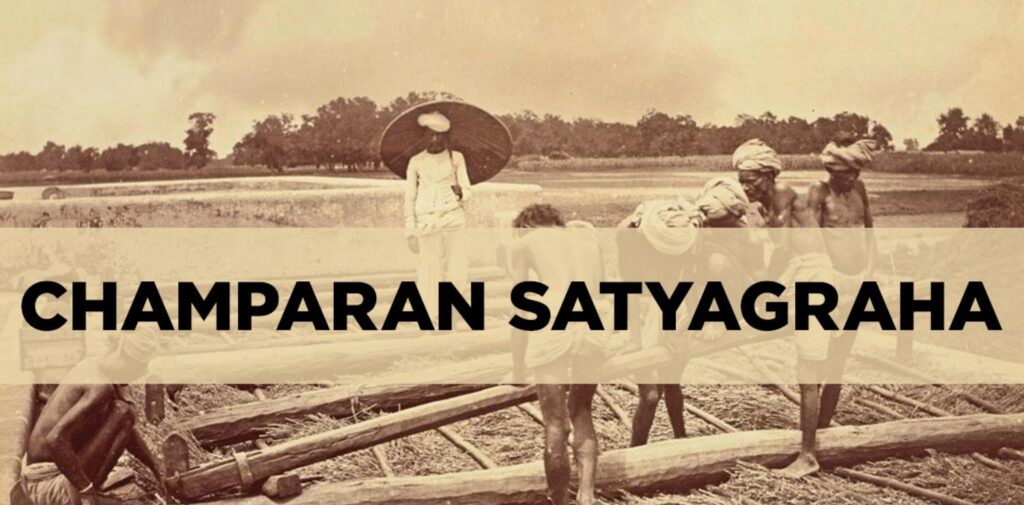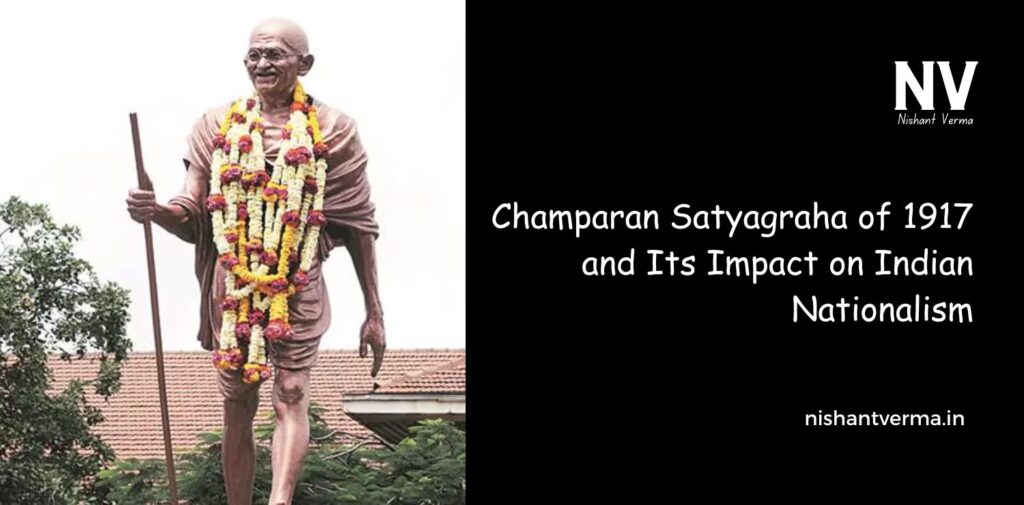India’s struggle for freedom from British rule was long and full of important events that helped bring the country closer to independence. One such event was the Champaran Satyagraha of 1917, a major step in India’s fight for freedom. Led by Mahatma Gandhi, this movement was a turning point in India’s independence movement. It showed that non-violent resistance could be a powerful weapon against the British rulers.
Let’s take a look at what happened in Champaran in 1917 and how it changed the course of India’s history.
What Was the Champaran Satyagraha?
In 1917, the Champaran district was located in the state of Bihar, in northeastern India. This area was mainly known for its agricultural work. However, the people of Champaran were suffering due to the oppressive and unfair treatment they received from the British rulers and landlords (who were Indian in many cases, but who worked closely with the British).
The farmers were forced to grow indigo (a plant used to make blue dye) on their land. The British made them do this because the demand for indigo in Europe was very high. The farmers were not paid properly, and the land was not suitable for indigo farming, so the crops didn’t yield well. To make matters worse, the farmers were forced to sell their crops at very low prices and were treated unfairly.
The farmers tried to protest, but their voices were not heard. They were being exploited and had no one to turn to. However, in 1917, things changed. Mahatma Gandhi, who had already worked for the rights of Indians in South Africa, arrived in Champaran to help these farmers.

Gandhi’s Arrival in Champaran
Gandhi came to Champaran in April 1917 after hearing about the poor conditions the farmers were living in. He understood that they were being treated badly and that they needed help. When he arrived, the British government did not welcome him. They tried to stop him from investigating the situation, but Gandhi refused to back down. He said he would stay and learn about the problems the farmers were facing.
Gandhi’s method of protest was very different from the violent methods used by others. He believed in non-violence (Ahimsa) and truth (Satya). He thought that if people protested peacefully and with truth on their side, they would win. This idea became the foundation of his movement for India’s independence.
What Did Gandhi Do in Champaran?
Once Gandhi arrived in Champaran, he started talking to the farmers, listening to their problems, and understanding their suffering. He realized that they were being forced to grow indigo on a portion of their land and were being cheated by the landlords. Many farmers had to grow the indigo even though it was damaging their crops and their livelihoods.
Instead of using force or violence, Gandhi encouraged the farmers to stand together and speak out peacefully. He helped them organize a movement, which was called the Champaran Satyagraha.
During the Satyagraha, Gandhi and his followers used peaceful methods to demand justice. They refused to accept the unfair laws and practices that the British had forced upon the farmers. The British tried to stop the movement by using force, but Gandhi’s determination and the unity of the farmers made it difficult for the British to suppress the protests.
Gandhi was arrested for his actions, but this only made the movement stronger. Thousands of people joined the protest, and they refused to back down. The pressure from the protests grew so strong that the British government had no choice but to investigate the situation.

The Outcome of the Champaran Satyagraha
The British government finally agreed to send an official committee to investigate the conditions in Champaran. The committee found that the farmers were indeed being treated unfairly, and their demands were justified. As a result, the British government decided to ease the burden on the farmers and made several important changes:
- The amount of land that had to be used for indigo farming was reduced.
- The farmers were given better compensation for their crops.
- The exploitative practices were abolished, and the farmers were treated more fairly.
The success of the Champaran Satyagraha marked a significant victory for the farmers and showed that non-violent resistance could achieve results.
Impact on Indian Nationalism
The Champaran Satyagraha was an important turning point in the history of India’s fight for freedom. It showed the Indian people that they could fight back against the British using peaceful methods. This victory helped inspire many more protests and movements across India. Gandhi’s approach of non-violent resistance became the central idea of India’s freedom struggle.
The Champaran Satyagraha also had a lasting impact on the Indian National Congress (INC), the main political party that was leading the fight for independence. Gandhi’s success in Champaran convinced many people in the INC to support his methods of peaceful resistance. This led to the rise of the Non-Cooperation Movement in the 1920s, which was a large-scale, non-violent protest against British rule in India.
Gandhi’s success in Champaran also helped him gain the trust and respect of the common people. Before this, he was mainly known for his work in South Africa. But after Champaran, he became a national leader in India, and people from all walks of life began to follow him. His simple lifestyle and dedication to truth and non-violence inspired many.

Lessons from the Champaran Satyagraha
The Champaran Satyagraha taught India some important lessons:
- Unity is Strength: The farmers in Champaran were united in their cause, and this unity made their protest powerful. When people come together for a common cause, they can bring about change.
- Non-Violence Works: Gandhi showed that it is possible to win a battle without using violence. His method of peaceful protest, known as Satyagraha, proved to be very effective.
- The Power of Truth: Gandhi’s belief in truth played a major role in the success of the movement. He always stood by the truth, even when the British tried to stop him. This inspired millions of Indians to follow his example.
- Courage in the Face of Injustice: Despite facing many challenges, including arrest, Gandhi remained calm and determined. His courage inspired others to stand up against injustice in their own lives.
Conclusion
The Champaran Satyagraha of 1917 was a crucial moment in India’s struggle for freedom. Gandhi’s peaceful resistance against British rule in Champaran showed the power of non-violence and truth. It also brought together people from all walks of life to fight against exploitation and injustice. This movement played an important role in inspiring future protests and helped India move closer to independence.
Today, we remember the Champaran Satyagraha as a shining example of how a peaceful, determined movement can bring about social and political change. Gandhi’s success in Champaran paved the way for many more victories in India’s long journey to freedom.




